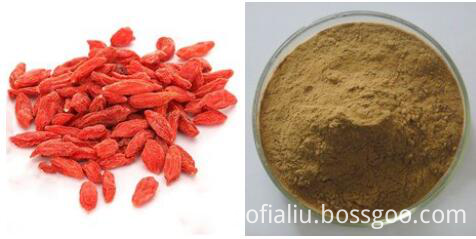Second, control the crown. Each bone stem keeps a prosperous new shoot in an appropriate direction. When the upwardly growing fruit-tree subshooter grows to 10 large leaves, it continuously picks up the heart and wipes the lateral buds to form a blind stick; 50 times for other prosperous shoots. %PP333 tipped. Take these measures to effectively control the growth, increase the yield per plant, reduce the physiological and pre-harvest drop.
Third, picking leaves hanging sticks. 20 days before fruit picking, the affected leaves of the fruit were removed and the hanging branches were lifted to the light-receiving surface to promote fruit coloring. 4 to 6 weeks before harvesting, hanging a drooping fruit branch with a rope or pulling it over the canopy can greatly improve the lighting condition of the tree and increase the coloration of the fruit.
Fourth, spraying plant growth regulators and fertilizers. In the flowering period and two weeks after flowering, each fruit was sprayed with LXL or fruit shape containing 1.8% of GA4+7 and 1.8% of 6-benzyl adenine, which increased fruit setting rate and promoted fruit enlargement. About 10 days after the peach blossom, spray 2 to 3 times 0.5% urea and 0.2% potassium dihydrogen phosphate mixture, spraying should be carried out in the windy evening or cloudy days, spraying once every 2 weeks.
Fifth, top-dressing watering. Peach fruit hard core period, fruit enlargement period of the top dressing once, each carbamide catch 30 grams, 30 grams of potassium dihydrogen phosphate. Combined with fertilizing each watering time, the amount of watering depends on soil moisture conditions.
Six, prevention and treatment of pests. 1 disease. The main diseases are peach bacterial perforation, mold perforation, and brown spot perforation. Before the budding, evenly spraying the Baume 5 degree lime sulfur agent on the tree body can reduce the source of pathogenic bacteria and the overwintering base number of pests. After the root disease was discovered, it was timely rooted with a multi-effect liquid. 2 Insect pests. Myzus persicae, whitefly, peach aphid, mainly damage leaves, shoots. Commonly used pesticides such as one-time net, fast killing spirit and enemy killing. 3 Prevent pests after fruit picking. After the fruit is harvested, peach trees in the greenhouse should also be strengthened to control pests and diseases, combined with foliar fertilizer, in order to prevent abnormal defoliation in the early autumn and promote the photosynthetic efficiency and accumulation of photosynthetic products in leaves, which can overcome the lack of storage nutrients. Poor flower bud differentiation and degradation of pistil.
Goji Polysaccharides is a rare plant polysaccharides containing protein, which have side chains of polysaccharide composed by six carbon sugars (rhamnose, arabinose, xylose, mannose, galactose, glucose) and main chains of protein composed by 18 kinds of amino acids. The glycoproteins with biological activity is a high-strength immune enhancer.
Wolfberry products with stable quality are all natural, safe, sanitary and fast absorption.Lycium barbarum polysaccharide extraction and purification is divided into two steps. First, the extraction of Chinese wolfberry crude polysaccharides, the second is purified Lycium barbarum polysaccharide. Crude polysaccharides extraction process is as follows: Weigh dried crushed medlar, petroleum ether: acetone (1: 1) reflux degreasing, the solvent was filtered off, the residue was air-dried 80% ethanol off monosaccharide and oligosaccharides.
The polysaccharide is extracted by water after dissolving the residues such as oligosaccharides in water at 90-100 DEG C, the extract is concentrated under reduced pressure, the polysaccharides are precipitated by ethanol, the precipitates are washed with anhydrous ethanol and acetone, and the lycium polysaccharides are dried under vacuum. The crude polysaccharide is purified by passing the Lycium barbarum polysaccharide through a column of DEAE cellulose with different concentrations of NaCl as an eluent, concentrating the eluates with different salt concentrations respectively under reduced pressure, desalting them by dialysis, and then lyophilizing them differently Grape Lycium glycoprotein.

Modern medical research suggests that wolfberry polysaccharides can improve human immunity and have functions as anti-cancer, cancer treatment, hematopoiesis, liver protection and hypotensive, free radicals removal , anti-fatigue, anti-radiation, and cell activity improvement; Goji polysaccharides can control cells division& differentiation, and regulate cell growth & aging, which is widely used in the pharmaceutical, health food and other fields.
Please feel free to leave us message.
Any inquiry would be replied within 2 hours on working days!
Production Specification Sheet
|
Product Name |
Goji Polysaccharides |
Country of Origin |
Ningxia in China |
|
ANALYSIS |
SPECIFICATION |
TEST METHODS |
|
Color |
Characteristic grayish white or light brown |
Organoleptic Inspection |
|
Odor |
Characteristic odor, no other odor |
Organoleptic Inspection |
|
Taste |
Characteristic taste, slightly sweet |
Organoleptic Inspection |
|
Characters |
Fine particles or powder, slightly caking |
Organoleptic Inspection |
|
Impurity |
No visible foreign material |
Organoleptic Inspection |
|
Moisture(%) |
NMT 10 |
GB5009.3 |
|
Leads(Pb), mg/kg |
NMT 0.5 |
GB5009.12 |
|
Arsenic(As), mg/kg |
NMT 0.3 |
GB/T5009.11 |
|
LBP content( %) |
NLT 35 |
GB/T18672 |
|
TPC, cfu/g |
NMT 1000 |
GB4789.2 |
|
Coliform, MPN/100g |
NMT 40 |
GB4789.3 |
|
Mold, cfu/g |
NMT 25 |
GB4789.15 |
|
Yeast, cfu/g |
NMT 25 |
GB4789.15 |
|
Pathogen |
Negative |
GB4789.4, GB4789.5, GB4789.10, GB/T4789.11 |
|
Shelf Life |
24 months if stored in a cool ventilated dry place |
|
Storage |
It should be stored under cool, well-ventilated and dry condition |
|
Package |
Inside: Double composite bag. External: Carton |
Goji Polysaccharides
Organic Goji Polysaccharides,Goji Beeren Polysaccharide,Polysaccharides Du Goji
Ningxia Wolfberry Goji Industry Co.,ltd , https://www.nx-wolfberry.com